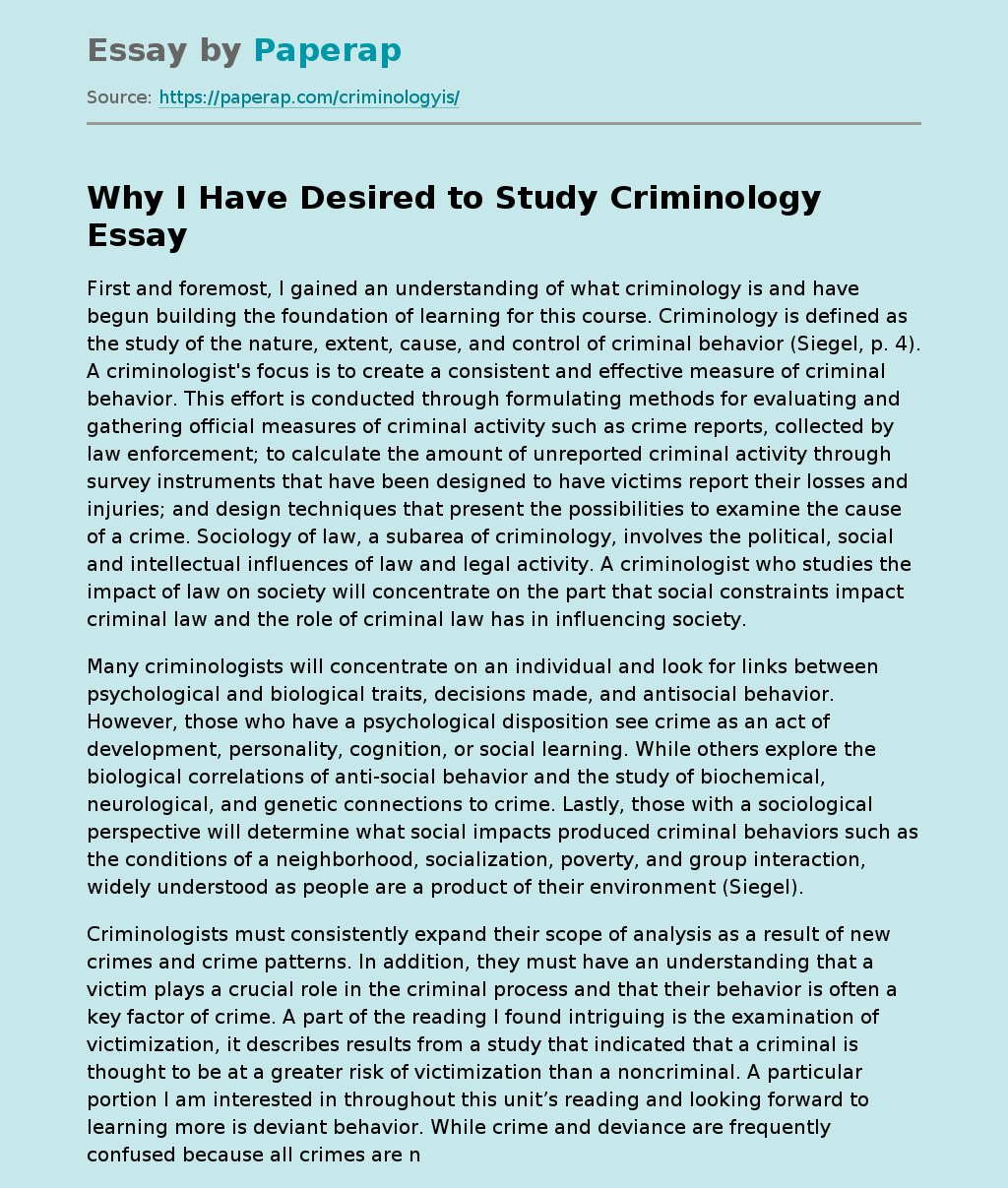Why I Have Desired to Study Criminology
First and foremost, I gained an understanding of what criminology is and have begun building the foundation of learning for this course. Criminology is defined as the study of the nature, extent, cause, and control of criminal behavior (Siegel, p. 4). A criminologist’s focus is to create a consistent and effective measure of criminal behavior. This effort is conducted through formulating methods for evaluating and gathering official measures of criminal activity such as crime reports, collected by law enforcement; to calculate the amount of unreported criminal activity through survey instruments that have been designed to have victims report their losses and injuries; and design techniques that present the possibilities to examine the cause of a crime.
Sociology of law, a subarea of criminology, involves the political, social and intellectual influences of law and legal activity. A criminologist who studies the impact of law on society will concentrate on the part that social constraints impact criminal law and the role of criminal law has in influencing society.
Many criminologists will concentrate on an individual and look for links between psychological and biological traits, decisions made, and antisocial behavior. However, those who have a psychological disposition see crime as an act of development, personality, cognition, or social learning. While others explore the biological correlations of anti-social behavior and the study of biochemical, neurological, and genetic connections to crime. Lastly, those with a sociological perspective will determine what social impacts produced criminal behaviors such as the conditions of a neighborhood, socialization, poverty, and group interaction, widely understood as people are a product of their environment (Siegel).
Criminologists must consistently expand their scope of analysis as a result of new crimes and crime patterns. In addition, they must have an understanding that a victim plays a crucial role in the criminal process and that their behavior is often a key factor of crime. A part of the reading I found intriguing is the examination of victimization, it describes results from a study that indicated that a criminal is thought to be at a greater risk of victimization than a noncriminal. A particular portion I am interested in throughout this unit’s reading and looking forward to learning more is deviant behavior. While crime and deviance are frequently confused because all crimes are not deviant and not all deviant acts are illegal or criminal but are defined as an action that advances from the social norms within a society. I am looking forward to understanding the line between behavior that is deviant and was is just considered hazardous and felonious (Siegel).
Chapter five covered the various trait theories and how they we have developed the links between genetics and crime. Additionally, the chapter reiterated the understanding that criminals can have mental or physical traits that make them different. With the acceptance of trait theories, more criminologists can research the individual traits and how they relate to crime. Different than previously thought, each offender is considered physically and mentally unique, which opens up the opportunity for different explanations for their behavior. Lastly, the chapter dove deep into the differences among the biochemical conditions that produce crime, such as an improper diet, which can cause mineral and chemical imbalances that lead to an intellectual and educational shortfall and difficulties. The author further explains how biochemical conditions can influence antisocial behavior (Siegel). A few questions running through my mind right now are:
Are crimes committed through choice and decision-making or as a result of delusional thinking and/or mental illness? Does a career criminal’s life predetermined early in their life or do events in one’s life change the course of their path?
Reference
:
- Siegel, L. J. Criminology: The Core. [Purdue University Global Bookshelf]. Retrieved from https://purdueuniversityglobal.vitalsource.com/#/books/9781337670531/
Why I Have Desired to Study Criminology. (2021, Dec 07). Retrieved from https://paperap.com/criminologyis/

